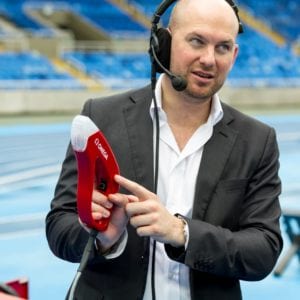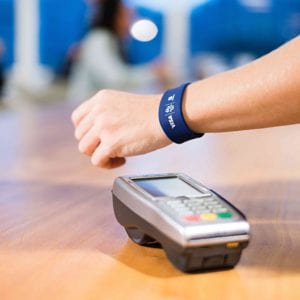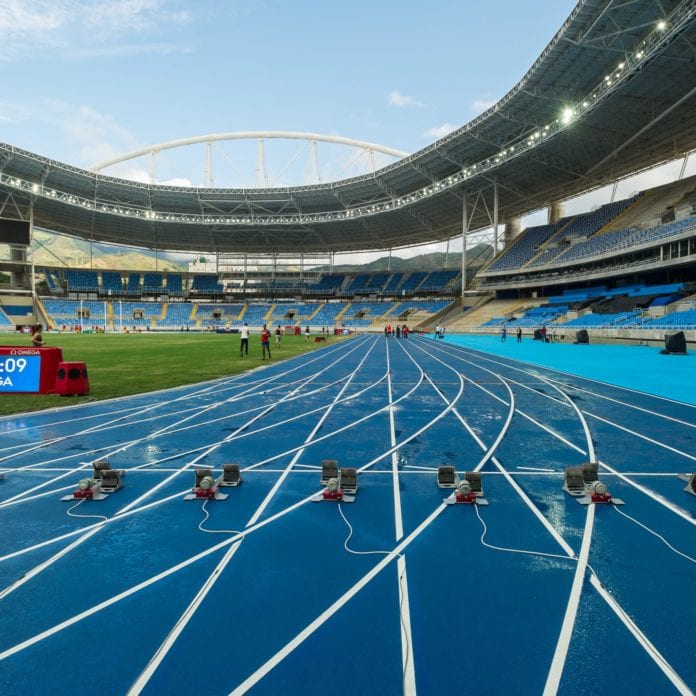Technology developments play a big role in transforming the Rio Olympics, whether improving result accuracy or increasing athletes’ performances. The next transformation and even greater impact are expected to come from the massive use of sensors combined with big data analytics.
Almost 20% of the 7.4 billion real ($2.25 billion) total budget the Rio Olympics Organizing Committee announced for the games this year was earmarked to implement information technology and telecommunication solutions. Almost 250 companies, including Atos, Cisco, América Móvil, EMC, Omega, Panasonic, Samsung and Symantec, have provided different levels of technology to build the entire infrastructure, the committee’s CIO Elly Resende told RCR Wireless News. He added that the committee worked closely with the Brazilian telecom regular Anatel to manage and control frequency band spectrum used for the games.
Resende explained that the Olympics and Paralympics aren’t the occasion to foster any brand-new technology or work as a showroom. Since the London 2012 Olympic Games, however, some technologies have matured and will debut in Brazil. Indeed, technology has dramatically increased the precision and reliability of results at the Olympic Games.
“Until 1948, everything relied on the accuracy of the human eye. Sometimes, the closest results could be open to dispute. But 1948 was perhaps the biggest step forward,” Alain Zobrist, CEO of Omega Timing noted. “That was when machines began to overtake human ability. It has evolved so much that we now have electronic results that are totally indisputable.” For example, he said, Omega has introduced the Scan-O-Vision MYRIA camera that can produce 10,000 images per second for a photo finish.
More accuracy
Over the years, technology has improved the accuracy of results at the Olympic Games. In the Rio Olympics, underwater digital lap counters from Omega will be used in the 800-meter and 1500-meter freestyle swimming events. They automatically update the lap count when a swimmer hits the touchpad on the wall.
Technology has also sped-up results. In archery, sensors were added to the classic paper, which lets spectators know when the arrow hits the target and displays the score on the screen just one second later. In racing, photocells positioned on the finish line replace the traditional finish line tape. The photoelectric cells emit beams of light across the finish line, stopping time as soon as a competitor crosses.
“It gives racers and spectators a precise understanding of the winner’s recorded time,” said Alain Zobrist, CEO of Omega Timing.
For the Rio Olympics, Omega is increasing the number of photocells from two to four. This addition means more body patterns can be detected as an athlete crosses the line, improving the accuracy in the final moment of the race.

Sensors
The increased adoption of machine-to-machine connections might have a huge impact on the Olympic Games, not only because they will bring more accurate results, but also because sensors can take several different measurements on an athlete’s health, impact of environmental conditions on competition places, etc.
“Evolving technology and software opens many possibilities for timekeeping and data handling. We are discovering many new ways to benefit athletes, judges and even spectators,” Omega’s Zobrist noted.
At the Rio Olympics, new scoreboards were introduced for golf. Placed on four dedicated tees, the scoreboards will be equipped with radar measurement systems. As a player tees off, information will be captured and displayed to spectators so that they can see a live output of the stroke speed, estimated distance and height of the stroke.
“We are also working on improved GPS positioning so that during events, such as road cycling and team sports, we can produce live information and statistics relating to individual performers,” Zobrist added.
The monitoring and analysis via sensors and the cross-references of machines data through cloud-based intelligent systems are tools with the potential to improve the technical and physical performance of athletes.
Talking about “internet of things” deployments at the Olympic Games, Eduardo Ricota, VP at Ericsson for Latin America, noted there aren’t many large-scale IoT projects, though he believes they will come in the future due to massive investments in featuring solutions for public transportation, security and publicity, among others.
Big data hits the games
To collect and analyze huge amounts of data in a short period of time or real-time has made differences in several businesses. As a co-sponsor of the Brazilian Canoe Federation, General Electric has been using big data technology to help athletes improve their technique, and as a result physical performances improve. The company installed sensors in the canoes and heart monitors on the athletes to collect data in order to measure both the performance of athletes and the canoes themselves during training sessions, according to Alfredo Mello, commercial head at GE for Rio 2016 Olympic and Paralympic Games.
In the canoes and kayaks, the system features are accelerometer, gyroscope, magnetometer and GPS — all used to measure the frequency and intensity of the rowing, as well as to detect the location, speed and direction of the canoe. In addition, the athletes will use a heart rate monitor that sends the information via Bluetooth to the sensors placed in the boat.
“All the information collected is transmitted to a host system that operates in the cloud on GE’s Industrial Internet platform. This host system stores and cross-references all the data automatically, providing the operator with a complete analysis and friendly visualization in a dashboard, accessed with a tablet,” Mello explained.

NFC in the field
Near-field communication technology will be highlighted at the Rio Olympics. Visa and Brazilian bank Bradesco will trial a bracelet equipped with NFC for payments. It is the first payment wearable launched by the two companies for the Brazilian market. The so-called Pulseira Bradesco Visa will be available for selected customers and Visa’s first payment ring will be given to all Team Visa athletes – a group of 45 Olympic hopefuls from around the world – in Rio, allowing them to make purchases by simply tapping their ring at any NFC-capable payment terminal.
According to Sabrina Sciama, communication director at Visa do Brasil, all 4,000 point-of-sale devices across key Olympic venues, the U.S. Olympic Committee’s USA House and Copacabana Megastore will be NFC-enabled, as well as 12 ATMs, provided by Bradesco, at Olympic Park. Visa is creating and managing the entire payment system infrastructure and network throughout all venues including stadiums, press centers, POS, the Olympic Village and Olympic Superstores.
“Thanks to technology we have today, during the Rio 2016 Olympic Games, we will be able to show new forms of payment, such as the NFC ring, the bracelet Pulseira Bradesco Visa and Visa Checkout online payment service,” Sciama noted, adding Visa expects that in the next 30 years payment methods will migrate from plastic card to e-commerce, mobile-commerce, in-app payments, wearables and contactless payments, peer-to-peer payments and via IoT devices.
“The plastic will migrate to any connected device, which can be a car, a refrigerator or a watch. To accompany this time, Visa is adopting strategies of open innovation and human centered, and opening innovation centers around the world, including Brazil,” she said.
In June 2015, Visa said it expected to launch an innovation lab in São Paulo, Brazil, in the second half of 2016.
Click here for more stories about the 2016 Rio Olympics.
Editor’s note: This story is part of a series focused on the technology deployments that support the Rio Olympics.

